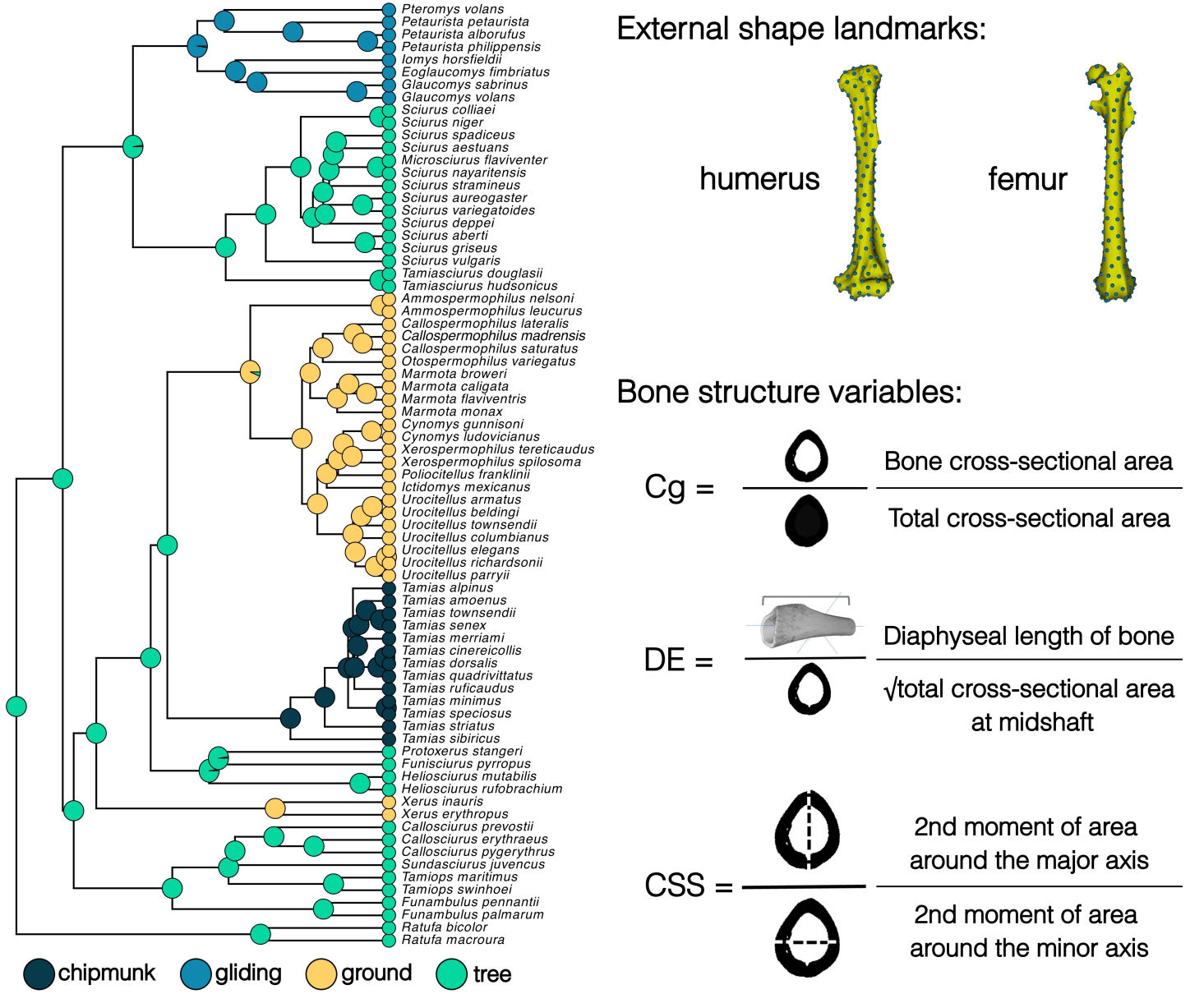

We CT scanned squirrel humeri and femora and quantified their external shapes and internal structures. The above figure shows the pruned phylogeny of our 76 species overlaid with an ancestral state reconstruction of squirrel ecotype. 194 pseudolandmarks on the humeri and 152 pseudolandmarks on the femora were generated and applied to our sample using the PseudoLMGenerator and ALPACA modules in SlicerMorph. Bone structure variables were calculated using the SegmentGeometry module in Slicer. Cg = global compactness; DE = diaphysis elongation; CSS = cross-sectional shape.
Free AI Website Creator